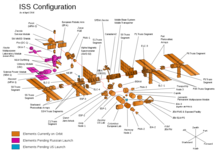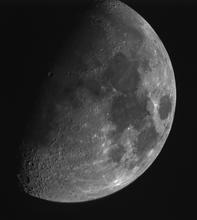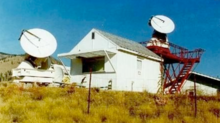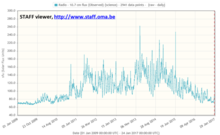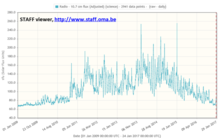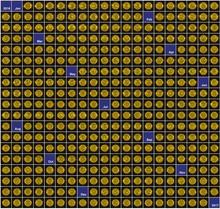news
Submitted on 2017-02-23
Once again, a coronal hole (CH) is making the headlines!
Submitted on 2017-02-10
How does the floor plan of the International Space Station looks like? Where is the bathroom, toilet, bedroom, gym, …? Are they connected with corridors? Is there a first floor, second floor, third floor?
Submitted on 2017-02-01On 31 January, the STCE Workshop "Geomagnetic storms and solar eruptions: from Sun to Earth" took place in the cozy meeting room of the RMI. Thirty-nine (39!) participants got submerged in the modeling of drivers of geomagnetic storms and solar storms as well as their impact on the geospace environment. The workshop was chaired by Dr Véronique Delouille (ROB), and consisted of 7 talks each followed by a few minutes of Q and A. An overview and links to some of the talks can be found at the workshop's website.
Submitted on 2017-01-27
This is an exceptional picture of the moon. Because it is made with a solar telescope!
Submitted on 2017-01-24Every day, the Dominion Radio Astrophysical Observatory (DRAO) in Penticton, BC, Canada, measures and publishes the values of the 10.7 cm solar radio flux on their website. The wavelengths around 10.7 cm (frequencies around 2800 MHz) are ideal for monitoring the solar activity, as they are very sensitive to conditions in the upper chromosphere and at the base of the corona. As a result, this radio flux is widely used in solar research and space weather applications.
Submitted on 2017-01-18
SWAP, the extreme ultraviolet (EUV) telescope aboard ESA's PROBA2 solar satellite, has been observing the Sun on a daily basis in 2016. The folks from the Proba2 Science Centre have made a collage by combining an image for each day into a single poster. The impressive result and some additional explanations are at ESA's Space in Images.
Submitted on 2017-01-17
Patrick S. McIntosh passed away on 16 October 2016. He is well known for the famous sunspot classification he developed.
Submitted on 2017-01-16Three challenges for which the belspo BRAIN-be was funded. Find out what it is about.
Submitted on 2017-01-05Regular solar observers have noticed that since mid-2016, the Sun has occasionally been devoid of sunspots. In fact, the month of December counted another 6 spotless days (see SDO-image from 10 December underneath). These spotless disks will gradually become a familiar feature as the solar cycle is heading for its next minimum, currently expected by the end of this decade. The number of spotless days can vary significantly from one solar cycle transit to another.
Pages
Zircon - This is a contributing Drupal Theme
Design by
WeebPal.







